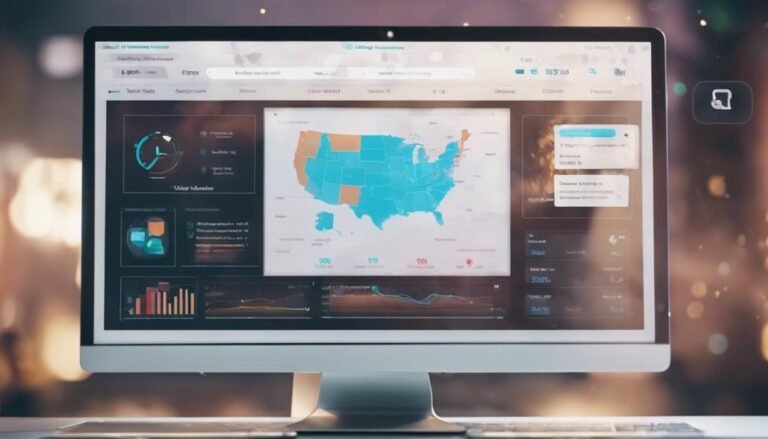10 Email Marketing Trends for 2024 and 2025
As we move further into 2024 and 2025, email marketing continues to be a cornerstone of digital marketing strategies across industries. Despite the rise of social media, messaging apps, and other digital communication platforms, email remains a highly effective channel for reaching customers. However, the landscape of email marketing is constantly evolving, driven by technological advancements, changing consumer behaviors, and new privacy regulations. To stay ahead, businesses must adapt to these trends and leverage them to enhance their email marketing campaigns.
1. Hyper-Personalization and AI-Driven Content
In 2024, the demand for personalized content is more critical than ever. Consumers expect emails that are not only tailored to their interests but also reflect their current needs and behaviors. This is where AI-driven personalization comes into play.
Artificial Intelligence (AI) enables marketers to analyze vast amounts of data to understand customer preferences and behaviors at a granular level. With AI, businesses can segment their audiences more precisely and deliver highly relevant content. For example, AI can help identify what types of products a customer is likely to purchase next based on their browsing history, past purchases, and even the time they typically open emails.
Moreover, AI-powered tools can automate the creation of dynamic content within emails, such as product recommendations, personalized offers, and customized messaging. This level of personalization increases engagement rates and drives conversions by making the recipient feel that the email was crafted specifically for them.
2. Interactive Emails
Interactive content is becoming a significant trend in email marketing for 2024 and 2025. Rather than just delivering static messages, marketers are incorporating interactive elements that engage recipients directly within their inboxes. This trend aligns with the broader digital marketing shift towards more immersive and engaging content.
Some examples of interactive email elements include:
- Surveys and Polls: Allowing users to provide feedback or vote on options directly within the email.
- Galleries and Carousels: Enabling users to browse through images or product offerings without leaving the email.
- Quizzes: Engaging users with short quizzes that lead to personalized recommendations or results.
- Countdown Timers: Creating urgency with live countdowns for promotions or events.
These interactive features not only enhance user engagement but also provide valuable data that can be used to further personalize future emails. As a result, interactive emails can lead to higher click-through rates and conversion rates.
3. Automation and Triggered Emails
Email automation is not a new concept, but in 2024, it has become more sophisticated and essential than ever. Automated email campaigns, also known as drip campaigns or triggered emails, are designed to send messages based on specific user actions or behaviors. These can range from a welcome email series when someone subscribes to your newsletter to cart abandonment reminders or post-purchase follow-ups.
The key advantage of automation is its ability to deliver the right message at the right time, without requiring constant manual input. In 2024, businesses are increasingly using automation to nurture leads, onboard new customers, and re-engage inactive subscribers.
Advanced automation tools also allow for multi-step workflows that can adapt based on user interactions. For instance, if a user opens a specific email and clicks on a link, they might enter a new sequence designed to push them further down the sales funnel. This level of automation ensures that communication remains relevant and timely, which can significantly improve customer retention and lifetime value.
4. Focus on Data Privacy and Compliance
With the growing emphasis on data privacy, 2024 has seen a surge in regulations and consumer awareness regarding how personal data is used. Laws such as the General Data Protection Regulation (GDPR) in Europe, the California Consumer Privacy Act (CCPA), and other regional regulations have put data protection at the forefront of email marketing strategies.
Marketers must now be more transparent about how they collect, store, and use customer data. This includes providing clear opt-in and opt-out options, allowing users to manage their preferences easily, and ensuring compliance with data protection laws across different regions.
In addition to legal compliance, respecting data privacy builds trust with your audience. By being upfront about data usage and offering control to users, businesses can foster stronger relationships with their subscribers, which in turn can lead to higher engagement rates.
5. Mobile Optimization and AMP for Email
As mobile devices continue to dominate the way people access the internet, optimizing emails for mobile viewing has become non-negotiable. In 2024, more than half of all emails are opened on mobile devices, making it crucial for marketers to ensure their emails are mobile-friendly.
Responsive design is key, with emails that automatically adjust to different screen sizes and resolutions. But beyond basic mobile optimization, 2024 is seeing a rise in the use of Accelerated Mobile Pages (AMP) for email. AMP allows for more dynamic and interactive content within emails, such as live updates, carousels, and forms that users can fill out directly from their mobile devices.
By leveraging AMP, marketers can create more engaging and functional emails that cater to the mobile-first audience, enhancing the overall user experience and increasing the likelihood of conversions.
6. Increased Use of Video Content
Video continues to dominate the digital landscape, and its integration into email marketing is a trend that is gaining momentum in 2024. Including video content in emails can significantly boost engagement, as videos are more likely to capture attention and convey messages quickly and effectively.
While embedding full videos in emails can be challenging due to technical constraints, marketers are increasingly using animated GIFs, video thumbnails with play buttons, or even linking to hosted videos on platforms like YouTube or Vimeo. These methods still allow users to engage with video content without overwhelming the email’s load time or causing compatibility issues across different email clients.
Videos in emails can be used for product demonstrations, tutorials, customer testimonials, or personalized messages from company executives. By using video content strategically, businesses can enhance their storytelling and build stronger connections with their audience.
7. AI-Powered Email Copywriting
In addition to AI-driven personalization, 2024 is also seeing the rise of AI-powered email copywriting tools. These tools use natural language processing (NLP) to generate email subject lines, body content, and even personalized greetings based on user data.
AI can analyze past campaign performance to identify which types of content resonate most with specific audience segments, then use this information to craft optimized email copy. This can save marketers significant time while also improving the effectiveness of their campaigns.
Moreover, AI tools can continuously learn and improve, providing marketers with data-driven insights into how to tweak their messaging for better results. As these tools become more sophisticated, they will play an increasingly important role in streamlining the email marketing process and enhancing campaign performance.
8. Sustainability and Ethical Marketing
As consumers become more conscious of environmental and ethical issues, brands are increasingly reflecting these values in their marketing efforts, including email marketing. In 2024, there is a growing trend towards sustainability-focused email campaigns, where businesses highlight their eco-friendly practices, promote sustainable products, and even reduce the frequency of emails to minimize digital pollution.
Ethical marketing also extends to how businesses communicate with their audience. This includes being transparent about business practices, avoiding deceptive tactics, and ensuring that marketing messages align with the company’s values. Brands that prioritize sustainability and ethical marketing in their email campaigns are likely to build stronger, more loyal customer relationships in the long run.
9. Integration with Other Marketing Channels
In 2024, email marketing is increasingly being integrated with other digital marketing channels to create cohesive and seamless customer experiences. This omnichannel approach ensures that the messaging across email, social media, SMS, and other channels is consistent and reinforces the overall marketing strategy.
For instance, a customer might receive a promotional email that is complemented by a follow-up reminder via SMS and supported by retargeting ads on social media. By integrating these channels, businesses can create a more comprehensive and effective marketing strategy that reaches customers at multiple touchpoints.
10. Predictive Analytics for Email Campaigns
Predictive analytics is another trend shaping the future of email marketing. By analyzing historical data, AI-driven predictive analytics tools can forecast future customer behaviors, such as the likelihood of opening an email, clicking on a link, or making a purchase.
These insights allow marketers to optimize their email campaigns by predicting the best times to send emails, the types of content that will perform well, and the segments that are most likely to convert. Predictive analytics can also help identify at-risk customers who may be disengaging, allowing businesses to implement re-engagement strategies before they lose them.
Conclusion
Email marketing continues to evolve in 2024, with trends focusing on personalization, interactivity, automation, and ethical practices. By embracing these trends, businesses can enhance their email marketing strategies, foster deeper connections with their audience, and drive better results. As the digital landscape continues to change, staying ahead of these trends will be crucial for businesses looking to maintain a competitive edge in their email marketing efforts.





